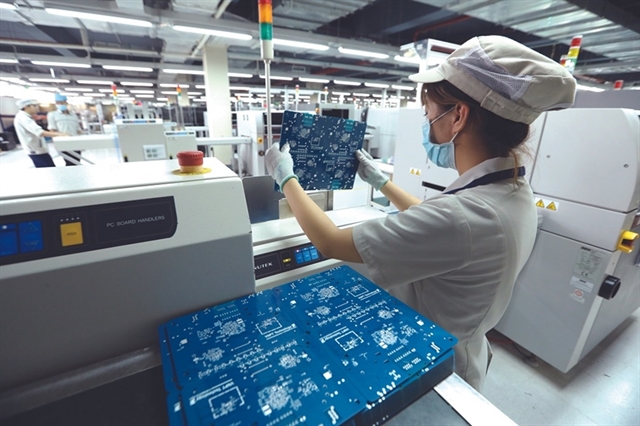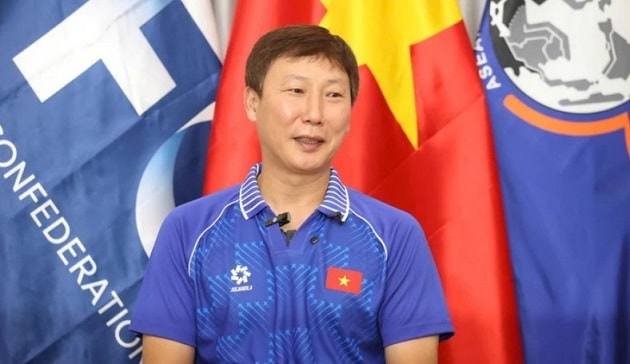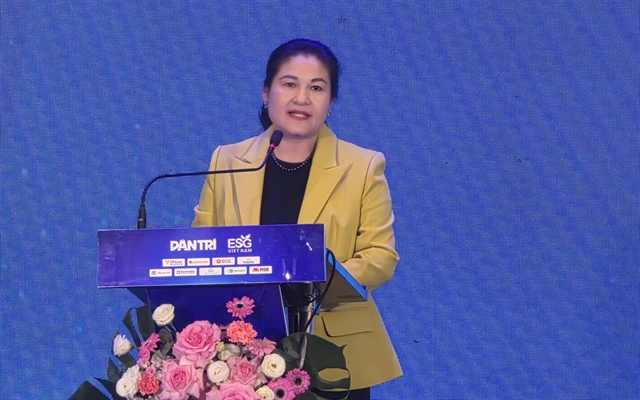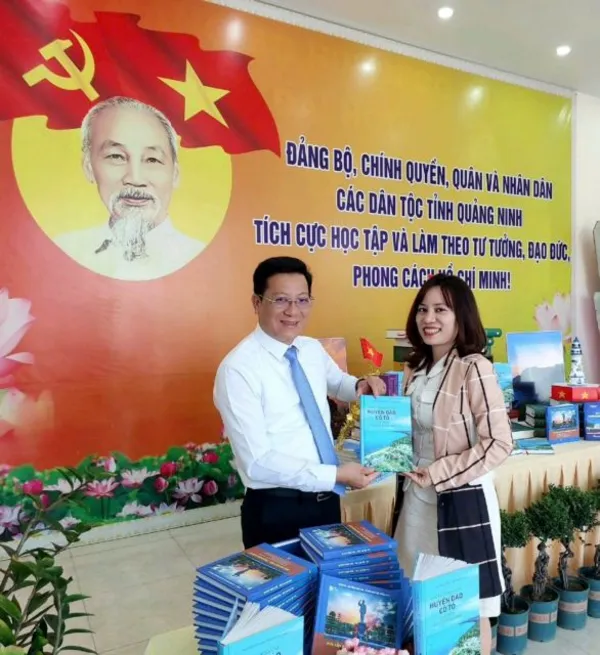 Society
Society


|
| A green-covered corner of Kim Mã Street, Hà Nội. VNA/VNS Photo Vũ Quang |
HÀ NỘI — As autumn, the most beautiful season of the year, arrives in Hà Nội, a sense of change can be felt in every corner of the peaceful city.
The cool breeze, the gentle sunlight and the golden leaves falling along the streets all signal the arrival of this charming season.
Hà Nội is wearing a new look of the autumn and donning a 'new coat' of modernity and civility, while still preserving its traditional identity and graceful charm.
Walking across Đông Kinh Nghĩa Thục Square, which has recently been renovated, Nguyễn Thu Huyền, a Vietnamese national now holding South Korean citizenship, told Vietnam News Agency: “After years living abroad, returning to Hà Nội, I can truly feel how much the capital has changed.
"Modern urban areas now stand side by side with the mossy roofs of the Old Quarter. Green lakes and tree-lined parks blend with a civilised, dynamic rhythm of life.
“From the bustling Hoàn Kiếm centre to the expanding suburban areas, the capital not only preserves its thousand-year-old heritage but also dons a magnificent new look, affirming its place as a modern, liveable, and globally integrated city.”
According to Huyền, the development of synchronised infrastructure has brought major changes to the life of Hanoians.
New, well-planned and modern urban complexes fully equipped with schools, hospitals, shopping centres and entertainment facilities such as Vinhomes Smart City, Ecopark, Times City and Starlake have become model satellite towns. These help ease population pressure in the inner city and offer residents a more comfortable and modern lifestyle, she said.
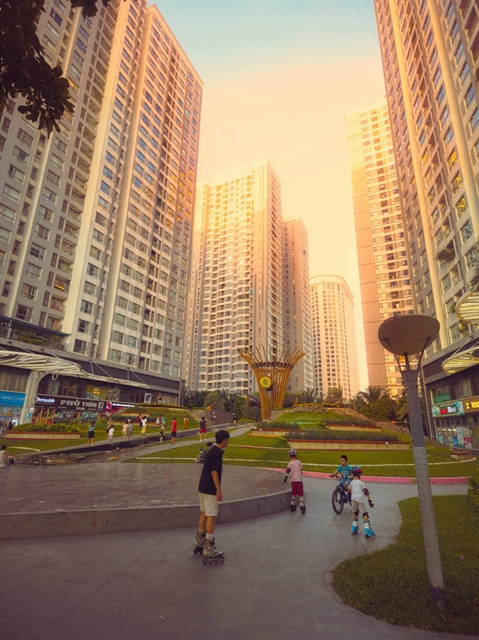
|
| Times City Urban Area. VNS Photo Khánh Dương |
The emergence of such urban areas not only improves living standards but also reshapes the city’s landscape, steering Hà Nội toward a greener, cleaner and more civilised future, she believes.
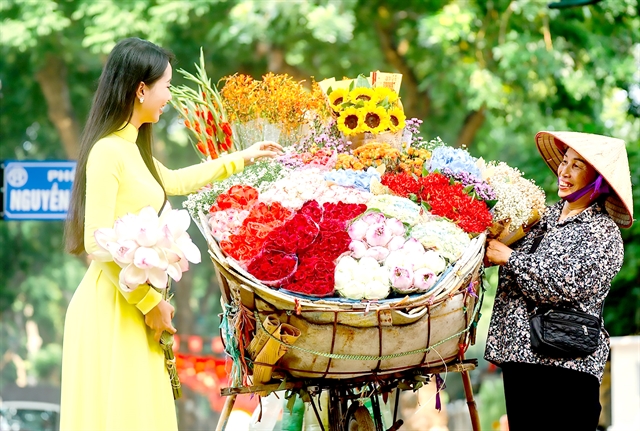
|
| A street vendor's flower bike - a signature of Hà Nội in the autumn. VNA/VNS Photo Khánh Hòa |
It is easy to see that amid the bustling pace of a millennia-old city, Hà Nội today appears more spacious and refined than ever.
Nguyễn Văn An, former Party Secretary of Đông Ngạc Ward, recalled that just a few years ago, areas such as Xuân Đỉnh and Đông Ngạc were still open fields.
Today, they are home to numerous real estate projects, office buildings, shopping centres and high-rise apartments - turning them into thriving development hubs.
Parks, lakes, and green spaces are being invested in and upgraded, bringing a fresh, vibrant look to the city and offering residents more places to exercise, relax and enjoy clean air, he said.
Over the past years, Hà Nội’s new ring roads, radial routes and river-crossing bridges have spurred the rapid growth of new urban areas, commercial centres and industrial zones, dramatically transforming the city’s appearance.
Urban planning experts note that in the development of a modern metropolis, transportation infrastructure acts as the “lifeblood” that sustains operations and expands living spaces.
Investing in a synchronised transport system not only meets immediate travel needs but also opens up new urban areas and drives socio-economic growth.
'Lifeblood' of urban development
Engineer Vũ Hải Hậu from Thăng Long Basis Construction Joint Stock Company recalled that a decade ago, Hà Nội was still a vast construction site filled with major transport projects with fenced-off roads, bridges under construction and metro stations taking shape.
Today, many of those projects have been completed and put into operation, delivering visible results.
The Cát Linh–Hà Đông and Nhổn–Cầu Giấy urban railway lines have become symbols of modern public transport. The metro lines not only help ease congestion but also offer residents a new, convenient way to travel.
A lot of key transport corridors now connect the southwestern areas with the city centre.
Major ring roads, including the elevated Ring Road 2 and Ring Road 3, have formed an interconnected network, reducing pressure on inner-city routes.
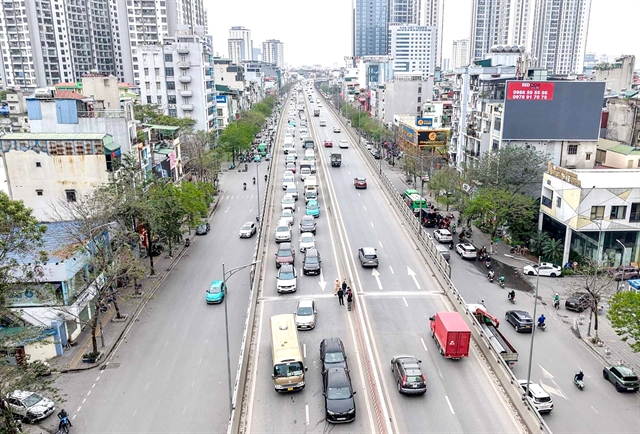
|
| A section of Ring Road No 2 which runs from Trường Chinh Road to Vĩnh Tuy Bridge. VNA/VNS Photo Hoàng Hiếu |
The ongoing Ring Road 4 project around the Capital Region, once completed, will serve as a vital driver of regional socio-economic development - linking Hà Nội with neighbouring provinces such as Hưng Yên and Bắc Ninh, and opening up new economic, trade and tourism corridors.
On the occasion of the 80th anniversary of the August Revolution and National Day (September 2), a series of key projects were launched or inaugurated, bringing new momentum and a renewed look to the capital.
Notable examples include the inauguration of the Yên Xá Wastewater Treatment Plant, the groundbreaking of vital bridges such as Vạn Phúc and Ngọc Hồi and site clearance for major national projects including the North–South high-speed railway and the Lào Cai–Hà Nội-Hải Phòng railway.
Hà Nội also started construction on new driving force projects such as the Hà Nội High-Tech Biological Park. and smart city.
Marking the 71st anniversary of the Capital’s Liberation Day (October 10), the city has continued to launch and complete key projects including Thượng Cát Bridge, Urban Railway Line No 2 (Nam Thăng Long–Trần Hưng Đạo) and Line No 5 (Văn Cao–Hòa Lạc) and the Lê Hồng Phong Cadre Training School, the second facility of Hà Nội Nephrology Hospital, the Cổ Linh underpass and the iconic Trần Hưng Đạo Bridge project.
These are not just roads and bridges - they are powerful levers for socio-economic growth, urban expansion and improved quality of life for the city’s residents.
New phase of development
This autumn, the Party Committee, administration and people of Hà Nội are gearing up for a major political event - the city’s 18th Party Congress of the 2025–30 tenure.
The congress is a significant milestone, opening a new phase of development with the aspiration of propelling Hà Nội forward, affirming its role as the political and administrative heart of the nation - a capital that is heroic, civilised, modern and rich in heritage.
It also aims to contribute to realising the national development goals for 2030 and the vision for 2045.
Over the past five years, despite complex and unpredictable global and domestic developments, especially the unprecedented impacts of COVID-19, the municipal Party Committee, authorities and local people have demonstrated solidarity, determination and wisdom to overcome difficulties and successfully implement the Resolution of the 17th Party Congress.
The city has basically met and exceeded its targets, with four indicators achieved one to two years ahead of schedule.
The city’s economy maintained stable growth, averaging 6.57 per cent per year, about 1.1 times higher than the national average.
The capital’s GRDP in 2025 is estimated to reach USS$63 billion, with per capita GRDP at around $7,200.
Amid global economic challenges, Hà Nội has emerged as a bright spot in Việt Nam’s foreign direct investment (FDI) landscape.
Since 1986, the capital has consistently remained one of the country’s leading localities in FDI attraction.
Its accumulated FDI capital has so far reached approximately $61.5 billion, with 7,710 valid projects, ranking second nationwide.
Lê Trung Hiếu, deputy director of the municipal Department of Finance, said the city’s success in attracting FDI stems from multiple factors including the strong confidence of international corporations in Hà Nội’s business environment and sustainable growth potential. The favourable investment climate has been strengthened by ongoing administrative reforms, greater transparency and preferential investment policies.
Hà Nội has taken the lead nationwide in streamlining its administrative apparatus for greater efficiency, completing the pilot model of the urban government system and restructuring commune-level administrative units on the largest scale in the country.
Significant progress has also been made in the fields of culture and social welfare.
The city’s Human Development Index (HDI) reached 0.829 in 2024, the highest nationwide.
That same year, Hà Nội officially eliminated poverty under its multidimensional standards and completed the eradication of temporary and dilapidated housing.
Culture: pillar of urban identity
As culture has been identified as a pillar of development strategy of the city, Hà Nội has allocated more than VNĐ5 trillion (around $200 million) to the cultural and sports sector, including over VNĐ1.7 trillion for heritage restoration, cultural infrastructure and arts activities.
Nearly 200 relics have been restored, bringing the total number of recognised heritage sites to nearly 6,000, including 21 special national relics and the UNESCO World Heritage Site – the Imperial Citadel of Thăng Long – a symbol of the city’s long-term, methodical investment in cultural preservation.

|
| Tết (Lunar New Year) celebrations held at the Imperial Citadel of Thăng Long earlier this year. VNA/VNS Photo Thanh Tùng |
Cultural elements have become an integral part of urban planning. When designing new infrastructure or urban areas, planners must consider impacts on heritage sites, ancient streets and green spaces that connect cultural landmarks.
Pedestrian zones, cultural parks, squares and creative public spaces are now incorporated right from the design stage. Urban renewal projects prioritise preservation over demolition, aiming to retain the city’s authenticity.
Hà Nội is also a pioneer in using digital technology to bring heritage to life.
The Temple of Literature, Thăng Long Imperial Citadel and Hỏa Lò Prison relic site have all applied 3D mapping, virtual reality (VR), augmented reality (AR) and mixed reality (MR) to recreate history and enhance visitor experiences.
The city continues to promote the growth of cultural industries and creative spaces under its title as a UNESCO 'Creative City', recognised in 2019.
Areas such as Phúc Tân, the Trần Hưng Đạo Mechanical Factory and Long Biên Station have gradually turned into creative hubs for artists and young people.
Experts emphasise that to sustain its 'cultural imprint', Hà Nội must assess cultural impacts in all planning and development projects. Urban plans should respect historical landscapes, heritage spaces, and integrate creative industries with traditional preservation.
Architect Đào Ngọc Nghiêm, vice chairman of the Việt Nam Urban Planning and Development Association, said modern urban management must be a process of integration - where institutions, planning, culture, science, technology and communities operate within one unified ecosystem.
Hà Nội should invest in training and capacity building for cultural officers, encourage local initiatives, and support unique cultural products to avoid duplication. Traditional culture should be brought into schools through regional festivals, mobile cinema and art programs, ensuring that culture reaches every neighbourhood, especially suburban and rural areas, he said.
Special event
Permanent Deputy Secretary of the Hà Nội’s Party Committee Nguyễn Văn Phong, said the city’s Party congress holds special significance for the capital’s development in a new historical phase for both Hà Nội and the country.
He noted that unlike previous congresses, this one takes place under uniquely favourable conditions, with political, legal and planning frameworks as well as global trends converging to create unprecedented opportunities for Hà Nội’s development.
The city benefits from the Politburo’s Resolution No 15-NQ/TW on orientations and tasks for the development of Hà Nội Capital to 2030, with a vision to 2045. Building on this, the National Assembly passed the amended Capital Law, providing a stronger institutional foundation for local development.
The Government also approved the master plan for the development of Hà Nội until 2030 with a vision to 2050, and the adjusted master plan to 2045 with a vision to 2065.
While central authorities have focused on removing policy bottlenecks and mobilising resources, Hà Nội is increasingly aware of its growth drivers, particularly human and intellectual capital.
During the preparation of the congress documents, the municipal Party Committee compared local development data with those of other Asian capitals to assess its progress and competitiveness, Phong said.
For the first time, the city will include new indicators such as a 'happiness index' to measure the quality of life, he said.
Local authorities have identified 18 key projects to be commenced and completed within the term, with a total investment of around VNĐ5 quadrillion (nearly $190 billion). Of this, state budget capital accounts for about 20 per cent, with the rest mobilised from social resources, he said.
According to the draft documents of the 18th Hà Nội Party Congress, the city aims by 2030 to become a civilised and modern capital of time-honoured culture and a green, smart, and globally integrated city boasting cultural essence concentration, high competitiveness, and a development level on par with that of the capitals of developed countries in the region.
By 2045, Hà Nội envisions itself as a globally connected city with high living standards and a per capita GRDP exceeding $36,000. VNS

